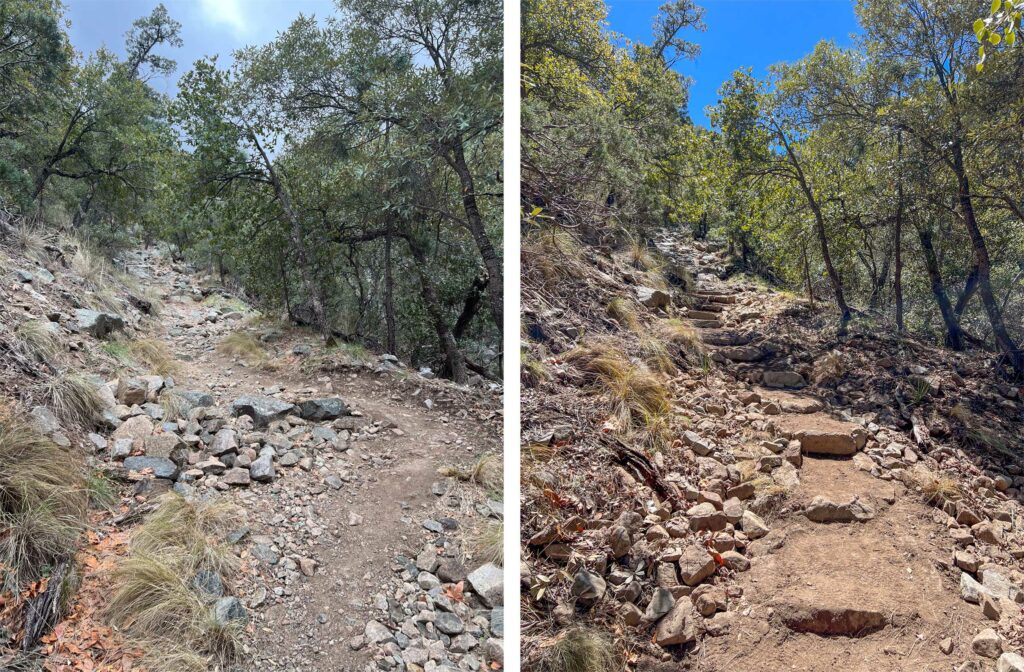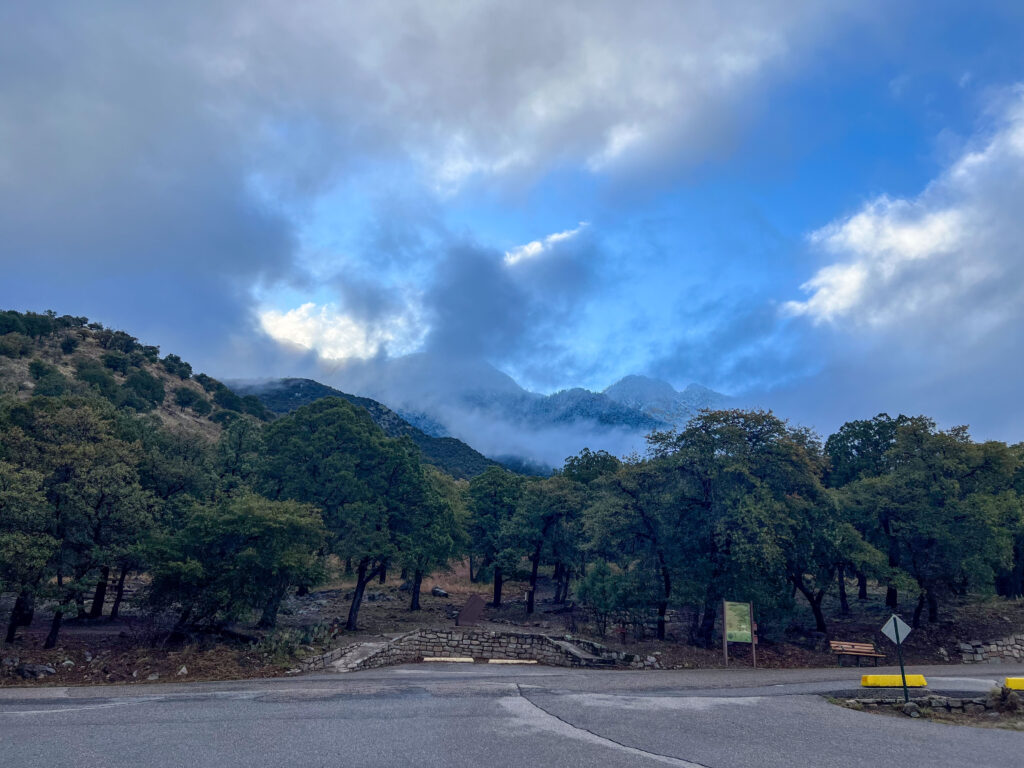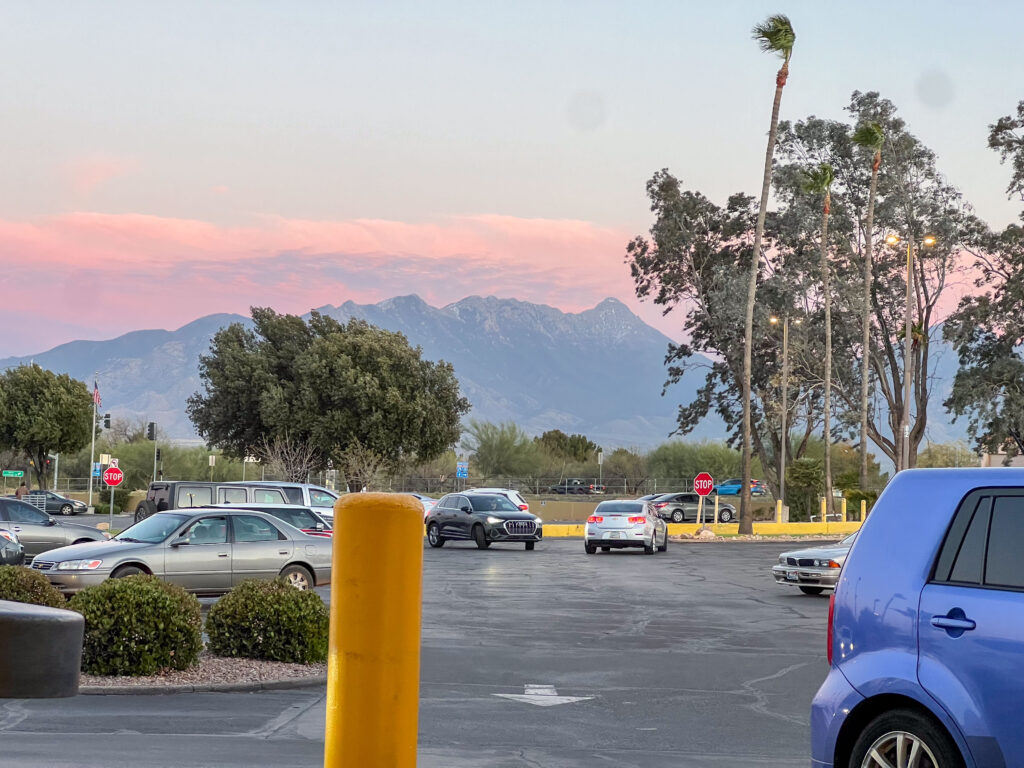
Written by Jonathan Patt, Wild Arizona’s Field Operations Manager.
The Wild Stew Field Crew’s latest journey into the heart of the Santa Rita Mountains within the alluring Mt. Wrightson Wilderness was multi-faceted and spanned multiple trails. Our first four days were spent in the backcountry, spiked out at Josephine Saddle where the very popular Old Baldy and Super Trails cross over each other.

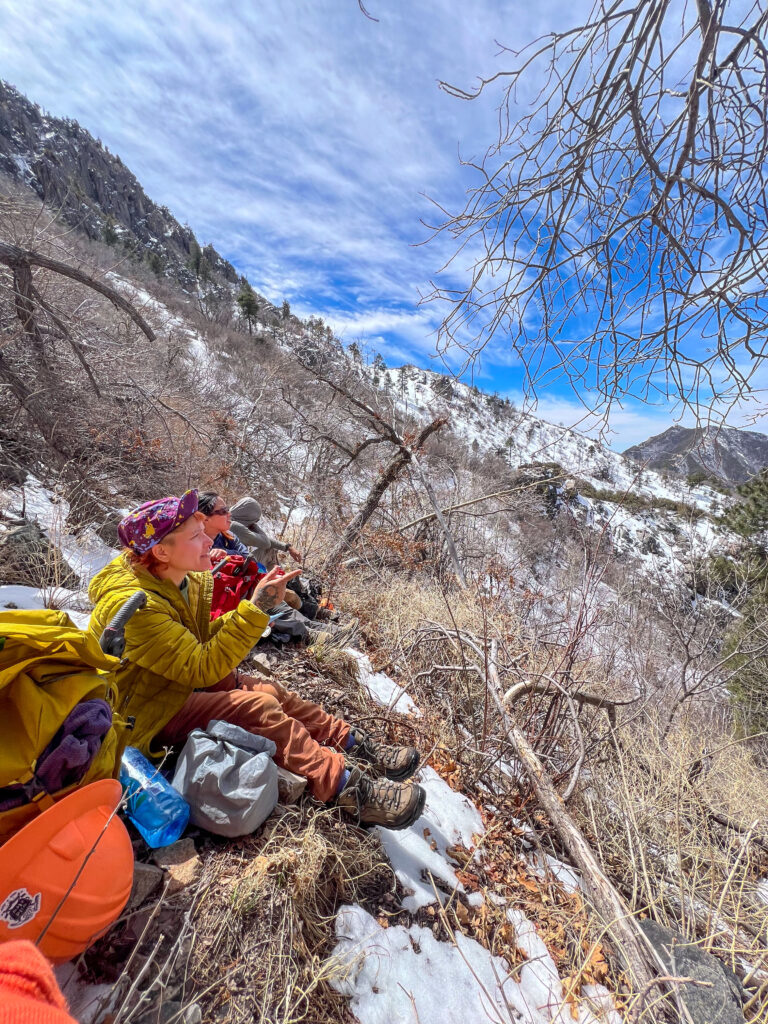
Armed with loppers and determination, we tackled the snow-covered northern face of Mt. Wrightson itself. As the snow was still too frozen to cross first thing in the morning, we worked until our first break on projects lower down and then once the snow softened in the sun each day, we tackled the dense oak, locust and other foliage in the switchbacks below Baldy Saddle with vigor.

Every day, we were passed by a dozen or more hikers who braved the snow as well as even icier conditions above us while trying to summit Mt. Wrightson. We even had a few canine visits, though less than on previous hitches. Jim Beck, Wilderness Ranger, came up just in time for lunch on Saturday to work with us to finish as much as we could up high and then help us pack up and hike out that afternoon, as an incoming storm was due to hit the next morning with 60+ MPH winds, rain and snow, and -1° degree wind chill forecast on the higher parts of the mountain!
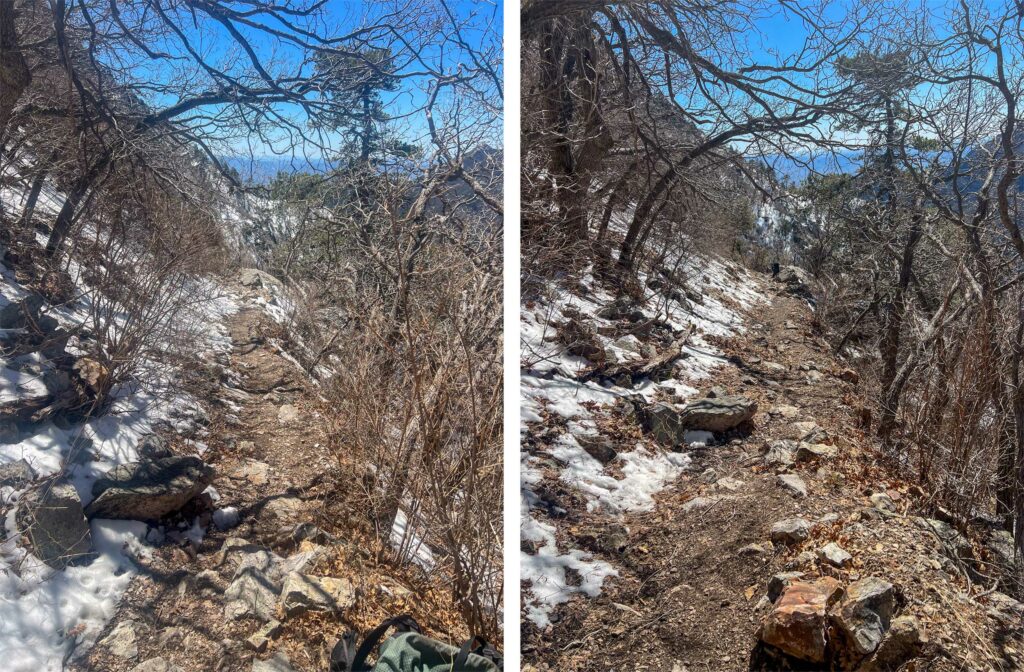
After moving camp back to the old missile base we so often camp at when working in the frontcountry around Madera Canyon, we did what we could to try and protect our tents from the wind and rain, and went into town to resupply on food for the unplanned frontcountry camping. Our gear mostly survived the weather, but it was some of the highest wind we’d experienced in a while, and everything was full of dirt by morning. Most of the crew posted up in the truck or trailer for the rest of the hitch!
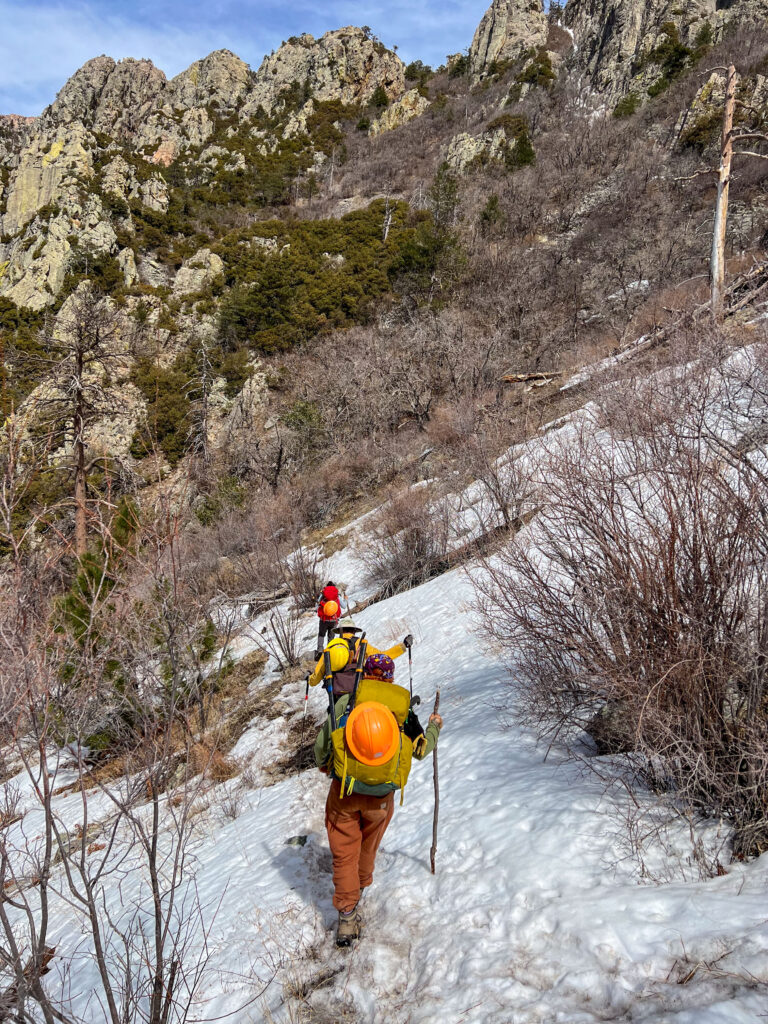
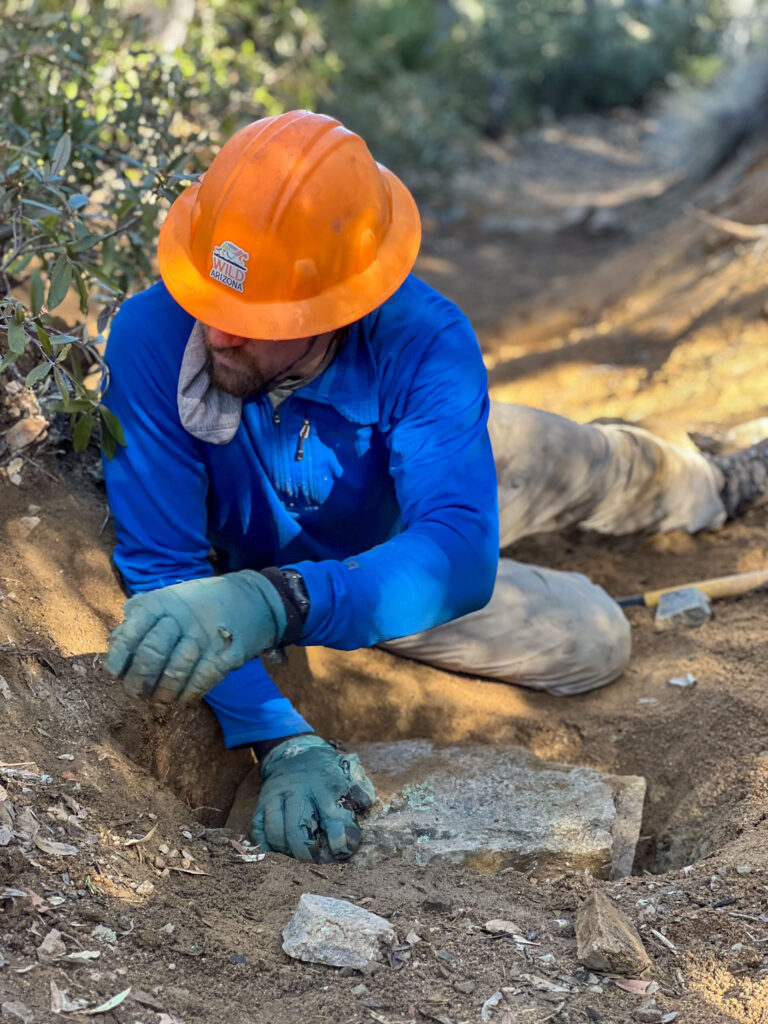
The next morning we started working on our alternate project: building heavy duty stone steps on the Carrie Nation Trail, another popular trail built on an old mining wagon road that has eroded down significantly as well with loose rock, a trench, and multiple paths along the 15′ to 20′ wide roadbed. We were asked to build them as solidly as possible, and define one solid, single path, obliterating and renaturalizing the other areas people had been walking.


Working through cold wind, rain and snow (and finally sun and warmth on the last couple days), we moved dozens of large rocks and dug them into the ground and filling each step tread with rock and compacted dirt, establishing a series of about 20 steps total across the first portion of this trail. Rockwork can be slow going, especially when you want it to last! This is just the beginning, however—the total length of steep and damaged trail here is about 1,500′ and that’s a lot more steps for the future! We hope we get to come back and continue the project.
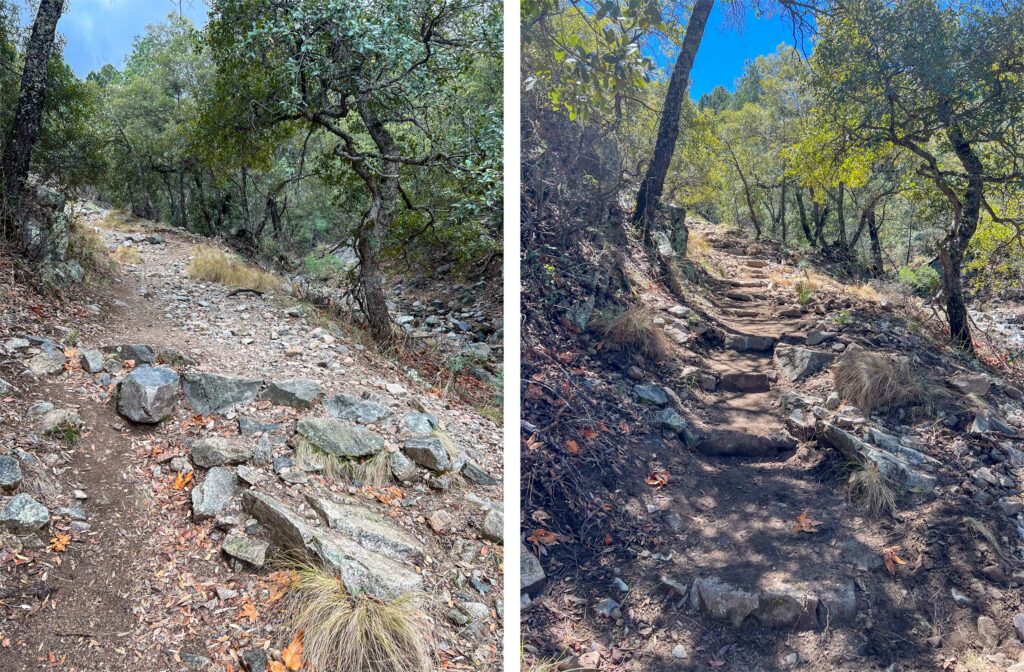
Meanwhile, Easter Sunday came and went with a rather small crowd compared to when we were working in the area two years ago, no doubt all due to the weather. We also had to move camp a second time, finally settling in Bog Springs Campground after the fire crew had a helicopter training at the missile base and needed us to move lest our tents get blown away by helicopter rotor wash this time.
